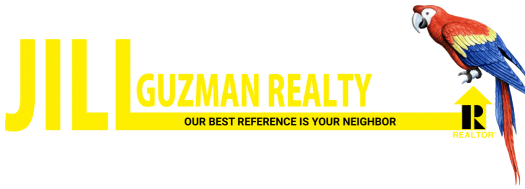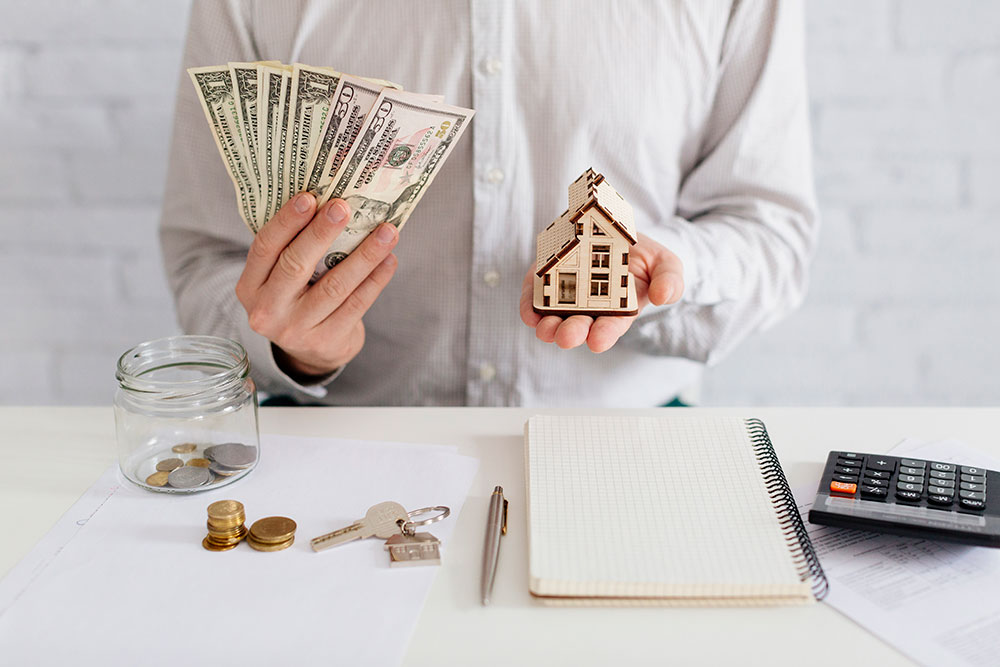A down payment on a house is a key first step in buying and owning your own home. If you’re new to the housing market, you might be completely lost and not know where to start.
Buying a house doesn’t have to be scary. As long as you come in knowing the basics, like how much payment is expected up front, how it will have an impact on your credit and more, you’ll be ahead of the crowd.
What is a Down Payment?
By definition, a down payment on a house is the money a home buyer gives to a home seller to lock in the home purchase deal.
In most cases, the remaining cash owed on a home purchase is paid via a mortgage loan obtained by the buyer. In that regard, the lender views a down payment as proof you’re invested in the home purchase, and that you’re committed to buying the home and making all your mortgage payments.
In financial terms, a home down payment is calculated as a percentage of the total home purchase. For example, if you’re buying a home for $200,000 and you pay $20,000 as a down payment, your down payment is 10% of the entire home purchase.
Source: https://www.thestreet.com/personal-finance/real-estate/down-payment-on-house-14686280
Your down payment has a significant impact on the total cost of your home. For instance, your interest rate on the home is calculated, in large part, based on the amount of your down payment. The larger your down payment on a house, the lower your interest rate will be, and the less you’ll wind up paying for your home.
The link between home down payments and interest rate aids lenders in calculating what mortgage industry professionals call the “loan-to-value” (LTV) ratio of the home. Loan-to-value, along with the debt-to-income ratio (i.e., the amount of money you owe weighed against the amount of income you earn) and your credit score are the primary factors a mortgage lender considers when making a home loan.
The loan-to-value ratio is basically defined as the percentage of the home’s value you owe after making a down payment on a new home. It’s calculated by taking the mortgage loan amount and dividing it by the appraised value of the house you’re buying. So if you’re buying a house that costs $100,000, you put down $10,000 and you’re borrowing $90,000, your LTV ratio is 90 percent.
Minimum Down Payments and the 20% Rule
Conventional wisdom usually says that you need 20% as a down payment to get the deal done. That’s not so, as home buyers can buy a home with 3.5% down a U.S. Federal Housing Administration (FHA) loan on a 30-year fixed-rate home mortgage.
3.5% FHA down payments are usually capped at $417,000 home mortgage loans, although there are exceptions to that rule depending on where the home for sale is located. Higher-incoming areas like San Francisco and New York City may see higher FHA loan down payment ceilings well beyond the traditional $417,000 limit.
Even conventional bank loans are often approved with down payments as low as 5% for loans up to $417,000. If the loan size is higher than $417,000, banks and other mortgage lenders usually ask for another 5% down.
Still, there is an upside in making a 20% down payment on a house. These benefits are at the top of the list:
- You’ll pay less for your home: Let’s say you’re buying a home for $100,000 with 20% down versus 5% down. With the 20% down payment, you’ll only have $80,000 left on your mortgage loan, plus interest. At 5%, you’ll have $95,000, with interest that only adds up with higher mortgage loan obligations.
- You’ll get a lower mortgage loan interest rate: Banks and lenders are highly likely to give a mortgage borrower a lower interest rate if they put 20% down on a home, versus 5% down on a home. Making a higher home down payment is a sign that you’re stable financially, and thus are a good credit risk.
- You’re more likely to get your dream home in a crowded market: Home sellers prefer a buyer who brings 20% down or more to the table. That’s a signal that the buyer’s finances are solid and that the mortgage loan is more likely be approved. That could prove to be a big differentiater if there is competition to buy the home.
- You won’t have to pay PMI: By making a larger down payment, you can also avoid paying private mortgage insurance (PMI). With a smaller down payment — say 3.5% — your mortgage lender will want some financial insurance that you’ll pay the larger loan off on time, and in full. That increases the monthly mortgage payments you’ll make if you make a smaller down payment – and that’s a problem a homebuyer who makes a 20% down payment doesn’t have.
How Much Should Your Home Down Payment Be?
The size of your down payment on a house depends upon multiple variables, including your personal financial situation, your age, your marital status, your income, your credit health and how much you’ve been able to save a home purchase.
Americans don’t usually put down 3.5% or 20% on a home purchase. In 2016, the average home down payment as 11% according to the National Association of Realtors. Younger home buyers aged 35 and under, who usually have lower incomes than people in their 40’s and 50’s, put down 8% on average for home down payments in the same time period.
When you’re figuring out how much you aim to save for a home down payment, know that it’s perfectly acceptable to steer any cash gifts from friends, family or business partners toward a down payment. Setting aside any workplace bonuses or financial windfalls (like an inheritance) can also curb the impact of having to save money for a down payment.
Types of mortgages
To best gauge the amount of money you’ll want to make in a home down payment, it’s helpful to know what to expect from various mortgage lenders.
Regular 30-Year Fixed Mortgage. Conventional mortgages, like the traditional 30-year fixed rate mortgage, usually require at least a 5% down payment. If you’re buying a home for $200,000, in this case, you’ll need $10,000 to secure a home loan.
FHA Mortgage. For a government-backed mortgage like an FHA mortgage, the minimum down payment is 3.5%. For a home that costs $200,000, you’ll need to save $7,000 to get a home mortgage loan.
VA Loans. A U.S. Veteran’s Affairs loan (VA) offers U.S. military members and veterans home loans with zero money down loan approvals. The U.S. Department of Agriculture (USDA) also has a zero-down payment loan guarantee program for specific rural areas.
Both the VA and the USDA don’t actually make the loans, but they do guarantee the loan through a regular mortgage loan provider. That doesn’t mean you can’t make a down payment, which will cut your mortgage burden. It simply means you don’t have to when you qualify for a VA or USDA loan.





